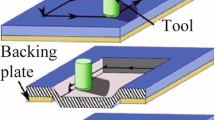Abstract
Warm forming of steel is an economic and ecologic alternative to the conventional hot forging technology. It offers several advantages like decreased energy input, reduced scale formation, better surface quality and closer tolerances. Warm forming is common for rotation symmetric parts but has not been applied for long flat pieces yet. The main obstacles prohibiting the transfer are the missing of a suitable preforming technology and the problems to keep the narrow temperature tolerances despite the increased number of forming operations compared to rotation-symmetric process routes. In a cooperative effort within a European consortium of forges and scientific institutes, closed-die warm forging processes for long flat pieces have been developed. To cover a wide range of longitudinal geometries, two model products, a connecting rod and a steering link, with unequal requirements towards the production process have been selected. The process developed for the steering link is discussed in this article.








Similar content being viewed by others
References
International Cold Forging Group (2001) Warm forging of steels. ICFG Document, No. 12/01, Erlangen
Neugebauer R, Geiger M (2003) Prozessgrundlagen für die Halbwarmumformung wellenförmiger Teile mit weit auskragenden Formelementen, Studiengesellschaft Stahlanwendung. Forschungsbericht P 452, Düsseldorf
Hustedt P, Kohlstette J (2003) Präzisionsschmieden von Langteilen—jetzt auch im Halbwarmbereich. Schmiede J, pp 25–26, March 2003
Neumaier T (2003) Zur Optimierung der Verfahrens-auswahl von Kalt- Halbwarm- und Warmmassivumformverfahren. VDI, Düsseldorf
Verein Deutscher Ingenieure (1998) Kaltmassivumformen von Stählen und NE-Metallen—Grundlagen für das Kaltfließpressen. VDI 3138, Düsseldorf
Lindner H (1966) Massivumformen von Stahl zwischen 600 und 900°C. VDI, Düsseldorf
Winship JT (1981) Flashless forging is here. Am Mach 125(6):138–141
Spies K (1959) Die Zwischenformen beim Gesenkschmieden und ihre Herstellung durch Formwalzen. Westdeutscher Verlag, Köln
Lange K, Meyer-Nolkemper H (1977) Gesenkschmieden. Springer, Berlin
Hustedt P (2003) Modular aufgebaute Vorformwerkzeuge für das Schmieden von Langteilen. VDI, Düsseldorf
Qiang L, Lovell M (2004) The establishment of a failure criterion in cross wedge rolling. Int J Adv Manuf Technol 24(3–4):180–189
Pater Z (2003) Tools optimisation in cross wedge rolling. J Mater Process Technol 139(1–3):153–159
Doege E, Meyer-Noelkemper H, Saeed I (1986) Fließkurvenatlas metallischer Werkstoffe. Hanser, München
Author information
Authors and Affiliations
Corresponding author
Rights and permissions
About this article
Cite this article
Behrens, BA., Suchmann, P. & Schott, A. Warm forging: new forming sequence for the manufacturing of long flat pieces. Prod. Eng. Res. Devel. 2, 261–268 (2008). https://doi.org/10.1007/s11740-008-0114-4
Received:
Accepted:
Published:
Issue Date:
DOI: https://doi.org/10.1007/s11740-008-0114-4




